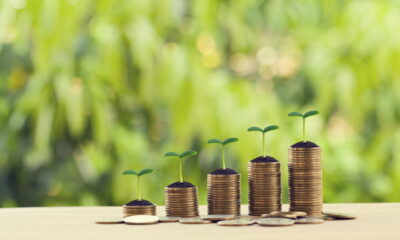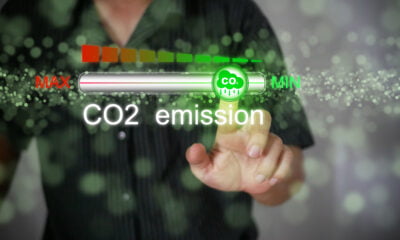

Features
Sean Kidney Keynote Address To The 2016 Luxembourg Stock Exchange Day
Climate Bonds CEO Sean Kidney made the following statements in his keynote address at the Luxembourg Stock Exchange.
Introduction
Ladies and gentlemen,
Firstly, thank you to our hosts, the Luxembourg Stock Exchange, for inviting me here tonight. This is the perfect venue to talk about green finance and the role of green bonds; we are standing where the first green bond was listed back in 2007.
Secondly, congratulations on the launch today of the Luxembourg Green Exchange (LGX).
This is an international step forward by the Exchange, taking a green, global lead. Well done!
Green finance opens the doors to a new age for the financial sector, An age born from three striking features of today’s economic and financial configuration:
-the investment challenges we are facing in the infrastructure realm
-the threats posed by climate change and
-the need for finance to reconnect with the real economy.
Green finance opens the doors to a new age for the financial sector
Green finance will address all three of these challenges. The G20 Green Finance Study Group has defined green finance as “the financing of investments that provide environmental benefits in the broader context of environmentally sustainable development”.
What does this mean in practice?
It means shifting to clean energy systems and financing solar and wind energy; it means increasing investments in rail, electric vehicles and other low-carbon transport solutions such as bio-fueled airplanes; it means building dense cities with low-carbon buildings, resilient water and waste infrastructure, cycling routes, public transport and car sharing options.
When we talk about green finance, we are talking about financing low-carbon and climate resilient infrastructure investments.
Green infrastructure investments provide an opportunity for the financial sector to reposition itself as a generator of prosperity in the real economy.
The three features facing finance and economics
Let’s dive deeper into each of the three striking features of the world we live in today that will shape the role of the financial sector in the years to come:
– Unprecedented infrastructure demand,
– Climate change and
– The need for finance to reconnect with the real economy.
Firstly, we find ourselves at a crucial moment in history in terms of infrastructure demand. Demographic and economic growth means that demand for new infrastructure by 2030 is estimated to be up to USD 94 trillion. Existing infrastructure is valued at approximately USD 50 trillion; this means that over the next decade we will need to invest in rebuilding our world.
There is no question on whether we need to ramp up investments in infrastructure, especially in rapidly growing emerging market economies like India, Indonesia and Nigeria.
The question is what infrastructure solutions we choose to invest in – the high-carbon solutions of the past or the low-carbon and climate resilient options aligned with current and future needs.
The investment choices that we make today and in the coming decade will determine our future and the future of our children, our grandchildren and the generations to come.
As my friend Mark Burrows, Vice Chair at Credit Suisse, says “The nature of the flow of capital in the next 15 years will determine the future we have”.
We have the power to choose to rebuild our world with infrastructure that will enable continued investment returns, economic growth and prosperous societies.
To choose which infrastructure solutions will best serve our economies today and tomorrow, it is essential to understand the climate change challenge.
Most of us have heard about the effects of climate change and the risks associated with a greater than 2 degrees rise in global temperatures by the end of the century: rising sea levels, increased frequency and severity of hurricanes, droughts, wildfires, typhoons, changes in agricultural patterns and yields.
However, many are still unaware of the extreme climate scenario we are currently headed for. The actions we have collectively taken to date to address climate change are not even close to enough.
The climate scientists of the world are telling us that we continue tracking beautifully and perfectly along the worst possible trajectory of climate change.
We are now heading for 7 degrees Celsius warming, according to the International Energy Agency – a conservative body.
For theoretical physicist Prof. Schellnhuber, director of the Potsdam Institute for Climate Impact Research and chair of the German Government’s climate advisory committee, “the difference between two and four degrees is human civilisation”.
A world that is 7 degrees warmer is not a livable world.
The latest climate science also tells us that the window to halt the dramatic changes that threaten our civilisation is shorter than we had hoped.
James Hansen, a former NASA climate director and one of the first to recognise man-made climate change and its effects, has identified a phenomenon driven by rising temperatures in the ocean near Antarctica that is further accelerating the impacts of global warming (a so-called feedback loop). This will cause glaciers in Antarctica and Greenland to melt 10 times faster than previous consensus estimates.
This means sea level rises of up to 3 metres instead of the 1 metre or so previously estimated. Parts of coastal cities like New York, London and Shanghai will sink below the waves. To give you a sense of this, a 1 metre rise would put runways of all the three New York City airports underwater.
There is other similar phenomenon that amplify the effects of climate change that are becoming observable and not just theoretical, such as immense methane bubbles under the Arctic permafrost. Methane has a global warming potency about 30 times that of CO2. Under the Arctic is an immense sea of frozen methane; it’s been there for hundreds of millions of years.
At current temperatures, the majority of the methane remains locked into the permanently frozen ground, but as temperatures keep rising, the permafrost melts, and the gas will be released – like an adrenalin shot into the world’s climate, causing further acceleration of warming.
There are many other feedback loops and tipping points around the world that make the challenge of controlling climate change extremely urgent – Christiana Figueres says we have a maximum of five years to act to keep global warming to a level we can adapt to.
We have less time than we thought.
Extreme climate change will have significant detrimental effects on assets and portfolios. An average loss of USD 4.2 trillion to the total global stock of manageable assets is estimated for the end of the century as a result of climate change. This is roughly the total value of the world’s listed oil and gas companies or Japan’s GDP.
6 degrees Celsius of warming could lead to losses of up to USD 13.8 trillion, or one tenth of manageable financial assets.
The effects of climate change on our society are not all in the future. We are already seeing dramatic consequences of increased weather variability due to a temperature rise of one degree.
This is causing threats to food security and water shortages, which in turn have provoked mass migration, social instability and even wars.
The magnitude and urgency of the climate challenge might sound daunting and disheartening.
The good news is we know what we need to do to get off this path.
It is still in our power today to move onto a path that limits climate change to a manageable level. It is a massive, global challenge, but we have all the tools at our disposal to address it: we need to invest in low-carbon and climate resilient infrastructure at a truly grand scale, and we need to do it today.
Connecting finance with the real economy
Every one of us here today can play a crucial role in the shift of capital towards green infrastructure while still maintaining a focus on financial returns.
We have a world awash in capital, in greater quantities than ever before. We have more capital looking for deals than ever before: pension funds and insurance funds in Europe, the US and Japan, are struggling to find returns in their depressed economies and are forced to invest in negative-yielding securities.
With interest rates so low where most of the money is and as much as USD 13.4 trillion worth of bonds with negative yields, there has not been a better moment in history to rebuild our world.
This is where the opportunity lies for the financial sector: in channeling private sector capital towards the “right” infrastructure projects; those that are low-carbon and climate resilient.
Here is where the third feature of this new age for finance comes into play. Enabling investment in real, tangible assets on the ground that add value to our future societies is the original purpose of finance.
However, there is increasing evidence of a perceived disconnect between the financial sector and the real economy post-financial crisis.
A survey by The Economist resulted in 57% of readers disagreeing with the statement that “financial innovation boosts economic growth”.
In his first statement after taking over the EU’s financial dossiers, Vice President Dobromsvkis stressed that “the main role and responsibility of the financial sector is to finance the real economy.”
Finding new ways to efficiently channel capital to green infrastructure assets allows the financial sector to reconnect with this original purpose; enabling growth in the real economy.
Disclosure around green investments also gives investors the opportunity to choose where to allocate their money and find value in their investment, in addition to returns.
There are many actions for the financial community to take to enable a huge increase in green infrastructure investments. I will focus on green bonds, a financial instrument that is already working in practice and enabling billions of dollars to flow to green infrastructure.
In the context of a new age for finance, green bonds help the industry meet infrastructure, climate and broader economy challenges: they deliver comparable risk-adjusted returns for infrastructure investments, they facilitate re-allocation of capital flows towards ‘green’ infrastructure, and they allow investors to attach purpose to their investments, reconnecting finance with hard assets in the economy.
For those of you unfamiliar with green bonds, they are just like traditional bonds but with proceeds that are earmarked for green projects and assets. Whether a bond can be labelled as green depends on the projects it finances and not on the overall ‘greenness’ of the issuing entity.
For example, an oil company can issue a green bond as long as the proceeds are used to finance projects in its renewable energy arm. In fact, this is exactly what we need in the transition phase: non-green industry or bank balance sheets and creditworthiness to finance low-carbon assets.
A wide range of entities are issuing green bonds – corporates, banks, development banks, municipalities – and we are also seeing asset-backed structures.
Green bonds are an attractive proposition to both issuers and investors.
To investors, green bonds offer a stable, rated and liquid investment with long duration. To issuers, they could tap the US$100 trillion global institutional fixed income investor base.
In the words of Mark Carney, Governor of the Bank of England and Chair of the Financial Stability Board:
“To investors, green bonds offer a stable, rated and liquid investment with long duration. To issuers, they could tap the US$100 trillion global institutional fixed income investor base. Moreover, the shift to the capital markets from banks will free up limited bank balance sheet capacity for early-stage project financing and other important infrastructure lending.”
Debt traditionally accounts for between 70% and 90% of infrastructure project financing, which is usually a mix between bank lending and bond issuance.
It has been made clear that capital markets will need to play a greater role as post-crisis regulation has limited the ability of banks to lend to infrastructure projects.
Green bonds are a great tool to tap into the USD 100 trillion bond market and into those pension and insurance funds in Europe, the US and Japan that are starved for yield, to finance low-carbon infrastructure.
Market growth
The green bond market has experienced a dramatic growth over the past few years, quadrupling in size from 2013 to 2015 to reach USD42 billion of issuance in 2015.
In mid-July this year, 2016 issuance surpassed the 2015 total of $US42.2 billion, as of today 27th September we are at $USD51.4 billion and we are aiming for it to reach USD 100 billion by the end of the year.
By 2020 we need the green bond market to be delivering USD 1 trillion of investment per year to meet climate needs. This level of growth is possible – it requires a doubling each year- because despite the rapid increase in issuance of the last years, there is still a considerable indication of unmet investor demand.
We continue to see high rates of oversubscription – Greenko’s USD500m renewable energy financing bond was eight times oversubscribed and last week’s $US2bn Mexico City airport bond for green buildings was 6.5 oversubscribed – and upsizing of green bond deals in response to investor interest.
The investor demand gives us comfort around the capacity of the market to grow from near USD 100 billion in 2016 to USD 1 trillion by 2020 and further in the following decade.
This is not just about labelled green bonds but all bonds that finance environmentally beneficial investments. We estimate these investments, labelled and unlabelled, to stand at almost USD 700 billion as of mid-2016. The green bond label has the potential to accelerate and facilitate investment flows towards green infrastructure to reach and overtake the 1 trillion target.
The green bond market is increasingly a global market.
We have issuance out of Europe, the US, Asia, Latin America, Africa and Australia. While the market started here in Europe and the US back in 2007 and 2008, over the past year it is the emerging markets that have taken the lead.
This leadership is driven both by the private sector, but also by governments, who see green bonds as a critical tool for financing their infrastructure plans and climate change commitments.
China has rapidly become the largest labelled green bond issuer this year with USD 15.4 billion issued so far.
After official requirements for issuers were released by the People’s Bank of China late last year, the government is committed to driving China’s transition to a green economy, and is considering providing both tax incentives and preferential interest rates to grow the green bond market further.
The Green Finance Mechanism announced by the PBOC and six other central regulators prior to the Hangzhou G20 is a further significant step.
In India, issuance has also ramped up the last year with almost USD 2bn issued so far. Here too the securities regulator has released official green bond guidelines to support market growth.
Other key emerging market powers like Mexico, Brazil, Kenya, Nigeria and Colombia, to name a few, have all launched green bond programmes in the last year.
In Europe, a recent highlight is the French Environment and Finance ministries announcing a green sovereign bond for 2017; this looks like it will be the first sovereign green bond globally.
At a sub sovereign level, the Australian State of Victoria achieved a world first with its recently issued multi-sector green bond and has foreshadowed further activity.
More sovereign and sub-sovereign issuance will help accelerate market development.
Green finance and green bonds go mainstream
Much more is also occurring outside the bond markets to help drive investment in green infrastructure towards that target. Green finance initiatives are now happening at a higher level than ever before.
A G20 Green Finance Study Group has been formed and has contributed significantly to the G20’s core agenda as shown in the Hangzhou Summit Communiqué.
The Financial Stability Board has launched a task force to develop voluntary disclosure guidelines that assess the exposure of companies to climate-change related risks.
The European Commission will establish a new expert group to develop a comprehensive European strategy on sustainable finance in the context of its Capital Markets Union.
These incredible developments in green finance and the rapid growth of green bond markets are promising and exciting first steps towards the new age of finance.
Green finance is no longer a niche; it is becoming mainstream.
Still, we need to step up our efforts.
Going back to the aims of the green bond market, and green finance more broadly; they are designed to help meet our infrastructure and climate change investment needs.
On that account, we are still failing, despite the rapid growth in green bonds and other green finance structures.
Many of you may be asking yourselves at this point is 1 trillion plus in green bonds by 2020 an optimistic estimate?
Stepping back a little, the underlying question is how to bridge the climate finance gap?
How to convert 180 plus NDC commitments, into national climate plans and then into pipeline after pipeline after pipeline of investable projects that go towards meeting international reduction emissions targets.
From that perspective $1tn by 2020 moves from being an optimistic estimate to an almost indispensable target.
We need to scale the green bond market from billions to trillions.
That is the level of ambition we need to reach the levels of green infrastructure investment that will keep our economies running and climate change under control.
All stakeholders have a role…and a responsibility
There is a role to play for everyone here in the room today; there is an opportunity to be seized.
Investors, we need you to make your demand for green bonds visible. This will encourage potential issuers to come to market with more deals.
Add your voice to investor statements, for example the Paris Green Bonds Statement signed in Paris last year by investors with US$11.2 trillion of assets under management.
Signaling your demand will also help spur governments to step up their game on developing green finance frameworks and green infrastructure plans.
Issuers, be ambitious and explore the opportunities of green bond financing. You may be sitting on a pool of eligible green assets and not know it.
When you do decide to come to market with a green bond, be ambitious in aligning with standards and guidelines, so that your bond is best in class when it comes to environmental performance and disclosure.
Banks, as market facilitators, you are in position to educate your clients on the green bond opportunities out there, to promote and generate deal flow to satisfy unmet investor demand.
Finally, there is a key role for the public sector.
Regulators, make sure there are no obstacles to green bond market development, and propose fiscally efficient solutions to stimulate the market, especially in the initial phases.
Policymakers, make your national infrastructure development plans green, and work more closely with investors and development banks to make sure the green infrastructure projects are attractive investments.
Conclusion
We are entering a new age for finance.
This new age of finance is driven by the need to invest in infrastructure at a scale not seen before. It is driven by the need for that infrastructure to be low-carbon and climate resilient to avoid climate change damaging our societies, economic growth and financial returns. It is also driven by the need for the financial sector to be reconnected with the real economy.
The new age of green finance opens the door to a breadth of opportunities for all market players. The green bond market is at the core of the new landscape that is emerging in green infrastructure financing.
Green bonds, and green finance, have become mainstream, but what we have seen so far is only the beginning. We need to channel capital to green infrastructure.
Trillions, not billions, in smart, clean, green, climate resilient infrastructure.
The time is ripe for everyone here today to engage with the opportunity of green infrastructure at the scale and urgency that it requires.
Thank you.






























